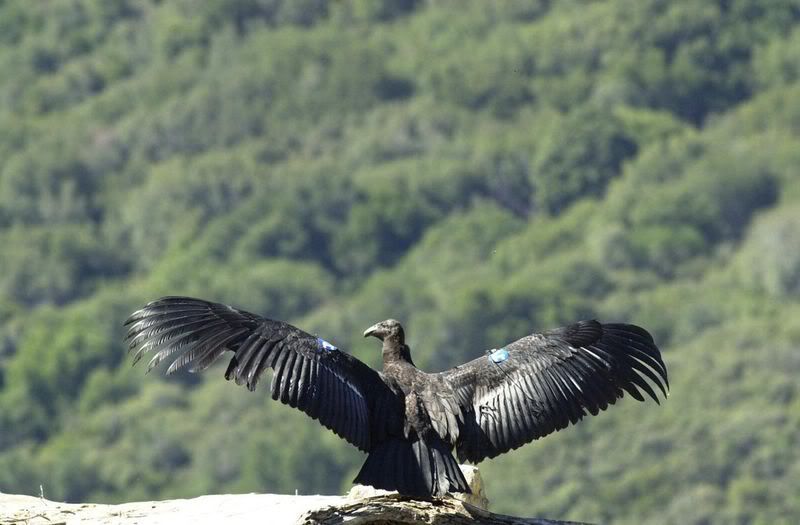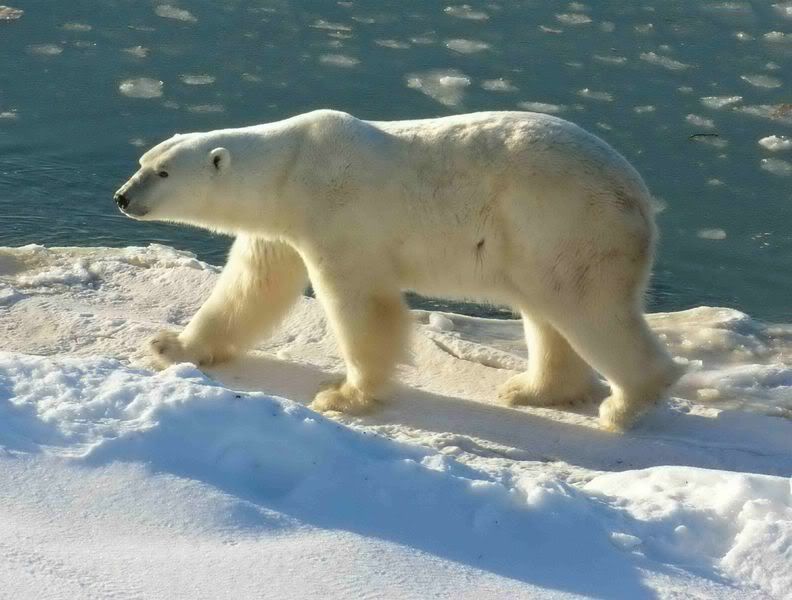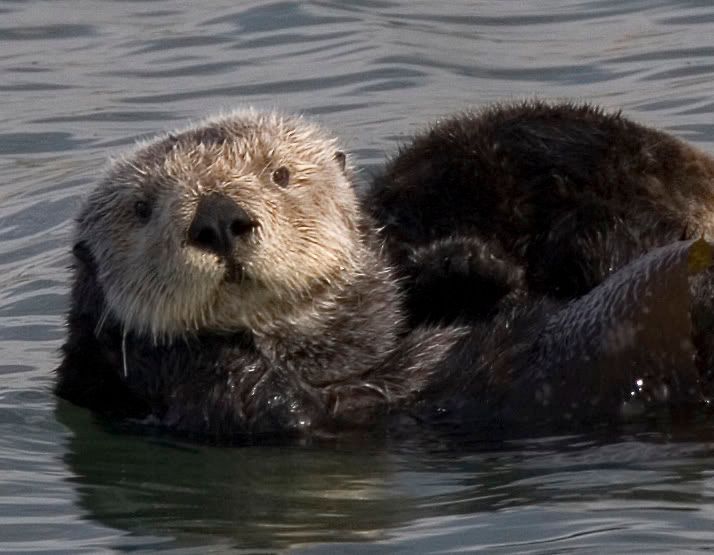( – promoted by buhdydharma )
 Bushie’s new rules will hasten the extinction of many species by redefining when and how protection is provided to endangered and threatened species covered by our Endangered Species Act. Bush is changing the law by rules because he failed to obtain these changes by legislation. Bush is using administrative rule changes even though one court rejected a similar rules maneuver by Bush.
Bushie’s new rules will hasten the extinction of many species by redefining when and how protection is provided to endangered and threatened species covered by our Endangered Species Act. Bush is changing the law by rules because he failed to obtain these changes by legislation. Bush is using administrative rule changes even though one court rejected a similar rules maneuver by Bush.
If you are already convinced that Bushie is up to his evil-doer ways, then please skip to bottom of diary to the links provided to post a comment to oppose these rules or to send an email to Kempthorne. Thanks.
Limitation on Harmful
Under existing law, consultation is required if the project “may affect” a listed species or critical habitat.
Bushie’s new rules reduce consultations by redefining what is harmful by defining the scope of causation between the project and impacts on protected species or critical habitat. There are a number of causation rules which are designed to segment projects, impacts and analysis so that it is easier to find no harm and thus no ESA protections.
For example, the new rules exclude from consultation actions that are “insignificant contributor(s)” to “any effect” on listed species or critical habitat. This means that if a project has “marginal” contribution to the harm on species or habitat, the harm is not subject to ESA review even though the cumulative impact of marginal harms (pdf file) is “one of the main causes of species decline and extinction.”
Another example is that if a harmful effect would occur on species or habitat even if the project did not exist, then no ESA review is required. It is often the case that multiple causes (pdf file) contribute to harm. Now, developers will be encouraged to locate projects in areas where there are multiple contributors to harm:
If a habitat area is at risk of degradation from both a subdivision and an invasive exotic plant, for example, it makes no sense to remove the subdivision from the ESA’s scrutiny simply because a solution has not yet been devised for the invasive species problem.
No More Informal Consultation
Consultations are “some of the most valuable and powerful tools to conserve listed species. Under existing law, federal agencies that carry out, fund or issue permits for a project (e.g., construction of new highway, mining, logging, real estate development, filling wetlands etc) must participate in either formal or informal consultation with government scientists in the US Fish and Wildlife Service (FWS) or the National Marine Fisheries Service (NMFS) if the project may have any affect on listed species or critical habitat.
The informal consultation process identifies what protected species or critical habitats exist in the area covered by the proposed project, determines what effects the proposed project may have on species or habitat, and evaluates what mitigation measures could be added to reduce or eliminate harmful impacts to species or habitat.
Consultation is not presently required when the federal action agency determines that a project will have no effect on protected species or critical habitat. Over 90% of projects (pdf file) are concluded at this early stage of informal consultation. Often the project is allowed to proceed because the federal action agency has agreed to implement modifications to the proposed project in response to concerns expressed by the government scientists during this informal consultation process. For example, if a nest is located in a tree stand at one corner of a project site, the project may still proceed, but measures must be followed to not disturb the tree stand.
 Under the new Bushie rules, this critical function to protecting species is essentially eliminated. The federal agencies proposing or authorizing projects may unilaterally decide whether a project has an adverse effect on listed species. This rule eliminates the current role of FWS and the NMFS to review projects and provide scientific analysis and judgment about what is needed to protect listed species and protected habitats unless some federal agency decides to request informal consultation.
Under the new Bushie rules, this critical function to protecting species is essentially eliminated. The federal agencies proposing or authorizing projects may unilaterally decide whether a project has an adverse effect on listed species. This rule eliminates the current role of FWS and the NMFS to review projects and provide scientific analysis and judgment about what is needed to protect listed species and protected habitats unless some federal agency decides to request informal consultation.
Reduction in Formal Consultations
Under existing law, the formal consultation is an in-depth review which results in the preparation of a biological opinion where the FWS or NMFS determine whether a project will jeopardize protected species or adversely modify critical habitat. If so, then the project must be changed by adding mitigation measures in order to proceed with the project. Formal consultation has been key to protecting species because federal action agencies have “often resisted (pdf file) the Service’s efforts in the consultation process to protect species and have often understated the harmful impacts of their projects.”
Under Bushie’s new rules, there is no requirement for formal consultation when a federal action agency unilaterally determines that a project will not have adverse impacts on protected species.
No GHG Evaluation
 The new Bushie rules provide that there is no requirement to consult on GHG emissions’ contribution to global warming and its impacts on listed species, such as the polar bears. Thus, if a federal agency provides funding for a new highway, the impact of tailpipe emissions on local air pollution may be an effect of the action, but the GHG emissions contribution to global warming and impacts on listed species will not be part of the ESA process. Bushie explains why GHG will now be excluded under the myriad of new convoluted causation requirements:
The new Bushie rules provide that there is no requirement to consult on GHG emissions’ contribution to global warming and its impacts on listed species, such as the polar bears. Thus, if a federal agency provides funding for a new highway, the impact of tailpipe emissions on local air pollution may be an effect of the action, but the GHG emissions contribution to global warming and impacts on listed species will not be part of the ESA process. Bushie explains why GHG will now be excluded under the myriad of new convoluted causation requirements:
First, GHG emissions from building one highway are not an ”essential cause” of any impacts associated with global warming.
Moreover, any such effects are later in time, but are not reasonably certain to occur (i.e., a finding that an effect is reasonably certain to occur must be based on clear and substantial information, cannot be speculative, and must be more than just likely to occur). For both reasons, impacts associated with global warming do not constitute ”effects of the action” under the proposed revision to that definition.
Even if these impacts would otherwise fall within the definition of ”effects of the action,” they need not be considered in any consultation because under the proposed Applicability section the building of one highway is ”an insignificant contributor” to any such impacts.
Further, any impacts associated with the GHG emissions from the building of one highway are ”not capable of being meaningfully identified or detected in a manner that permits evaluation” and ”are such that the potential risk of jeopardy to the listed species or adverse modification or destruction of the critical habitat [from those GHG emissions] is remote.”
Delay Exemption
Under existing law, if the consultation requirements are not satisfied by the federal action agencies, then the project can not proceed.
 Bushie’s new rule provides an easy exemption to avoid ESA even when a project harms species or habitat. Federal agencies may terminate consultation if the FWS or NMFS have not acted on the federal action agency’s request for concurrence within 60 days. One time extension of 60 days is permitted. The federal agency may then terminate consultation if there is no written determination from FWS or NMFS within these 120 days.
Bushie’s new rule provides an easy exemption to avoid ESA even when a project harms species or habitat. Federal agencies may terminate consultation if the FWS or NMFS have not acted on the federal action agency’s request for concurrence within 60 days. One time extension of 60 days is permitted. The federal agency may then terminate consultation if there is no written determination from FWS or NMFS within these 120 days.
One problem is that most delays in the consultation process are due to lack of funding by the federal government.
Public Comments Must Be Submitted by September 15, 2008
You may provide a comment online here. The government must read and respond to the comments.
PLEASE remember that while the comment form has blanks to fill in private information — like your address, phone number, e-mail address — you are not required to provide private information in order to submit a comment. However, the government will post your entire comment with any personal information provided by you in the federal register for all to see. So, please do not include any private information that you do not want publicly posted.
If you prefer, the National Wildlife Federation and the Natural Resources Defense Council (NRDC) Action Fund have an easy email already prepared which you can send Interior Secretary Kempthorne.

7 comments
Skip to comment form
Author
with emails and comments!
I signed both the National Wildlife and NRDC letters with a blurb of my one.
This has been one of my major concerns from way back and I keep fighting it — all of it!
It’s so f…g heartbreaking. Apart from how I feel about animals period, the Bush Administration cares nothing about global warming or the eco-balance — they are the most destructive group of people ever — everything they get their fingers in, they destroy!
Thanks again!